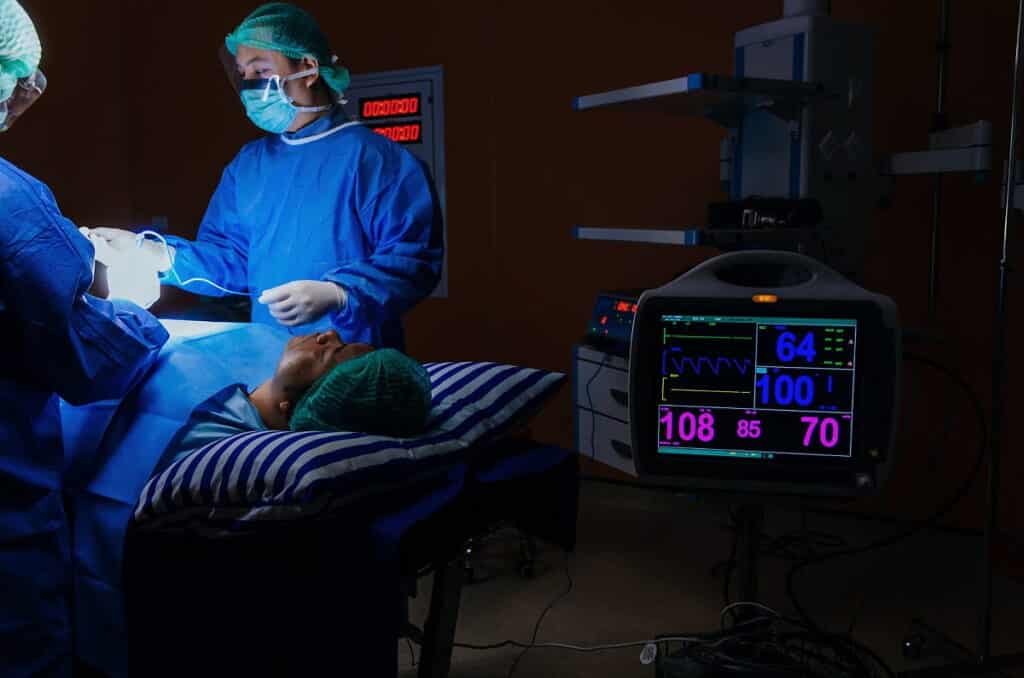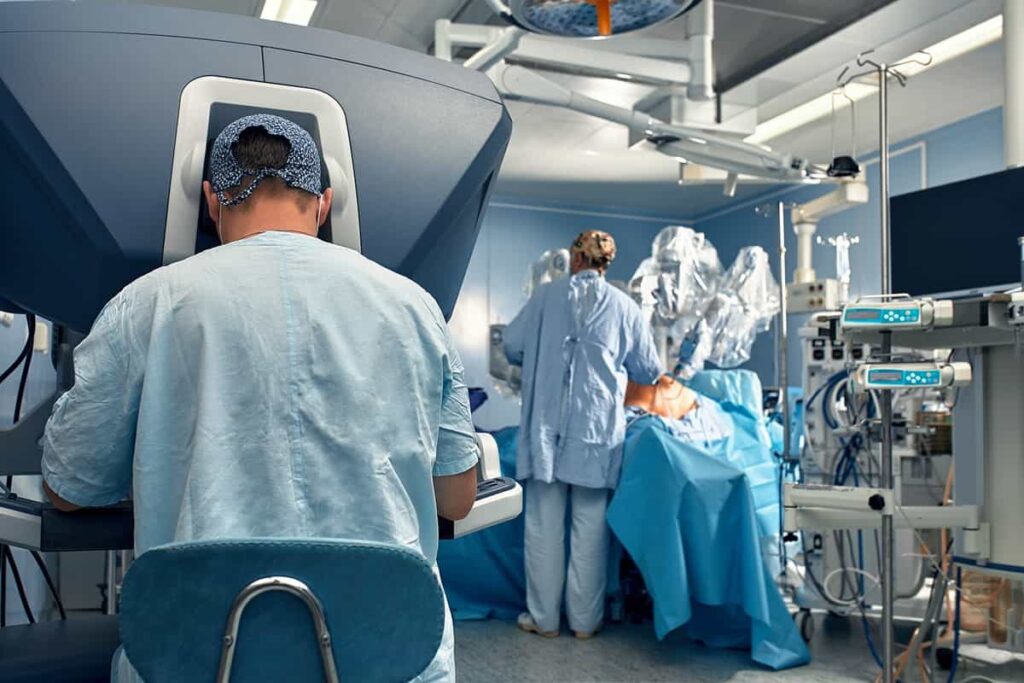Robocath Commercializes Robotic Heart Surgery System
Table of contents

We recently profiled an AI healthcare startup called AliveCor, which has developed machine learning algorithms that turn smartphones into clinical-grade electrocardiogram (ECG) recorders using only a small handheld device. It fit snugly into our ongoing coverage of remote patient monitoring in the Age of Rona. We’ve also written quite a bit about the increasing role of healthcare robots to minimize the spread of infections, from viruses to superbugs that can’t be killed. Now we want to combine those themes with one of our favorite topics – robots that do surgery. Specifically, we want to talk about Robocath, a French startup that’s just beginning to commercialize its robotic heart surgery system.
A French Robotic Surgery Startup
Founded in 2009, Robocath has raised about $60 million from more than a dozen investors. None of the names were too familiar to us, but the retail investor should make note of one company here: MicroPort Scientific Corporation (0853.HK), a medical device manufacturer that is publicly traded on the Hong Kong exchange. It led the $43 million Series C in April earlier this year, and just this month the Shanghai-based company formally entered into a joint venture (JV) with Robocath through its subsidiary MedBot.
Joint Venture in China
The JV has a few objectives. The first part of the plan is to commercialize Robocath’s flagship robotic heart surgery system, R-One, to China. Last year, the R-One obtained CE certification in the European Union, meaning it met the health and safety standards to begin marketing its robotics surgery platform. Robocath is green-lighted to hit the Middle East as well. The startup claims the R-One has the potential to be installed in more than 3,000 operating rooms and perform 1.6 million heart-saving procedures each year in Europe alone.
However, the China venture gives Robocath entry into the world’s biggest market in what’s called interventional cardiology, a branch of cardiology that deals specifically with catheter-based treatment of cardiovascular disease. Specifically, the R-One is designed to perform percutaneous coronary intervention (PCI), a procedure that uses a thin flexible tube (the catheter part) to place a stent to open up plaque-clogged blood vessels in the heart, a condition known as atherosclerosis. Once as rare as a grammatically correct sign translated in English, cardiovascular disease in China has skyrocketed in recent years. It is now the No. 1 killer of Chinese by far, accounting for nearly 45% of all deaths.

The unnamed JV includes local manufacturing of consumables and robotic assembly of the R-One line. The deal also involves R&D into what has been described as the “next long-distance generation of remote control over 5G network technologies,” which sounds like a move toward some sort of telexistence for remote control of robots. In addition, the new venture will develop artificial intelligence algorithms to be used with other robotic-assisted platforms.
Robotic Heart Surgery Systems
There are a number of different types of robotic-assisted procedures, including a growing number that focus on treating heart disease. Several studies have reportedly shown that patients who underwent robotically assisted cardiac surgery experienced significantly reduced hospital stays, complications, and really bad outcomes like death compared to those who suffered at the hands of a non-robotic cardiac surgeon. The OG of robotics surgery companies, Intuitive Surgical (ISRG), applies its da Vinci technology platform across a number of robotic-assisted procedures, including coronary artery bypass grafting and mitral valve repair – but not PCI.
The only direct competitor for robotics systems for PCI procedures that we could find in this space is U.S.-based Corindus Vascular Robotics, Inc., which Siemens Healthineers AG (SHL.DE) bought in October 2019 for about $1.1 billion. Corindus developed the first robotic-assisted PCI system about 30 years after the first successful manual procedure was performed in 1977. The CorPath 200 eventually gave way to the company’s latest model, the CorPath GRX. The new machine also performs peripheral vascular interventions (PVIs), a procedure used to short circuit irregular cardiac rhythms by scarring or destroying the heart tissue causing the problem.

While robotic heart surgery systems are intended to improve patient outcomes (CorPath boasts a 99% success rate), physicians also benefit from using remote-controlled robots. The procedure involves fluoroscopy, a type of medical imaging that produces a continuous video-like image using X-rays. That means doctors who perform a PCI must wear heavy lead vests while being constantly exposed to radiation. The CorPath system reduces radiation exposure to the primary operator by 95% (and 20% to the patient).
The Robotic Heart Surgery System from Robocath
That brings us back to the robotic heart surgery system from Robocath. The R-One consists of two main units:
- The radio-protected mobile control unit screens medical staff from radiation while a physician remotely controls the robotic arm using joysticks.
- The robotic unit consists of the robot and its articulated support arm.
The squeamish may want to skip this next part. A catheter is inserted into the body at the wrist (our preference) or the groin (definitely not our preference). The physician guides the catheter using x-ray imaging monitors along peripheral blood vessels to the start of the blocked coronary artery. A guidewire is inserted into the catheter and placed in the blocked artery, followed by a stent-carrying balloon that inflates to open up the clogged artery and put the stent in place. The whole procedure is done from the comfort of the control unit. Soon the patient will be eating again like Guy Fieri at an all-you-can-eat biscuits and lard gravy dive bar.

The R-One performed its first two successful procedures in France last year.
Conclusion
A number of research papers and scientific news commentaries are starting to say that the current pandemic is only accelerating the inevitable drive toward robotic surgery. We’ve seen this play out in our own coverage of robotic surgery companies, including six robotic surgery stocks for retail investors. Large medical device manufacturers like Stryker and Medtronic have bought their way into the robotic surgery market in recent years by acquiring private companies.
It’s impossible to guess where Robocath will end up – as predator or prey – especially as the company is only beginning to commercialize its first robotic heart surgery platform. Can it compete with Corindus, which recently demonstrated a telerobotic procedure over a 5G network? Will Intuitive Surgical, with a market cap of $85 billion, swoop in with a competing device? Selling hardware is hard work, and we haven’t seen any details or data from Robocath on costs or potential return on investment at this juncture. The startup claims more products are in the pipeline, including a robotic-assistance system for mechanical thrombectomy, an operation that consists of passing a catheter along the artery to clear a blood clot following a stroke. So there’s definitely a plan for some diversification within robotic heart surgery applications.
We suspect that MicroPort MedBot, which has developed a couple of its own robotic surgery platforms, may play an outsized role in the future of Robocath. While we can’t speculate if that role is as an investor, partner, or future owner – well, it sounds like we just did a little bit – the company seems to be in an enviable position thanks to a product with little direct competition as yet in some wide-open markets, including the world’s second-largest economy.
Stryker, Medtronic, and Johnson & Johnson are all companies found in our dividend growth investing strategy, Quantigence. Want to see the rest? Become a Nanalyze Premium annual subscriber.

Sign up to our newsletter to get more of our great research delivered straight to your inbox!
Nanalyze Weekly includes useful insights written by our team of underpaid MBAs, research on new disruptive technology stocks flying under the radar, and summaries of our recent research. Always 100% free.















